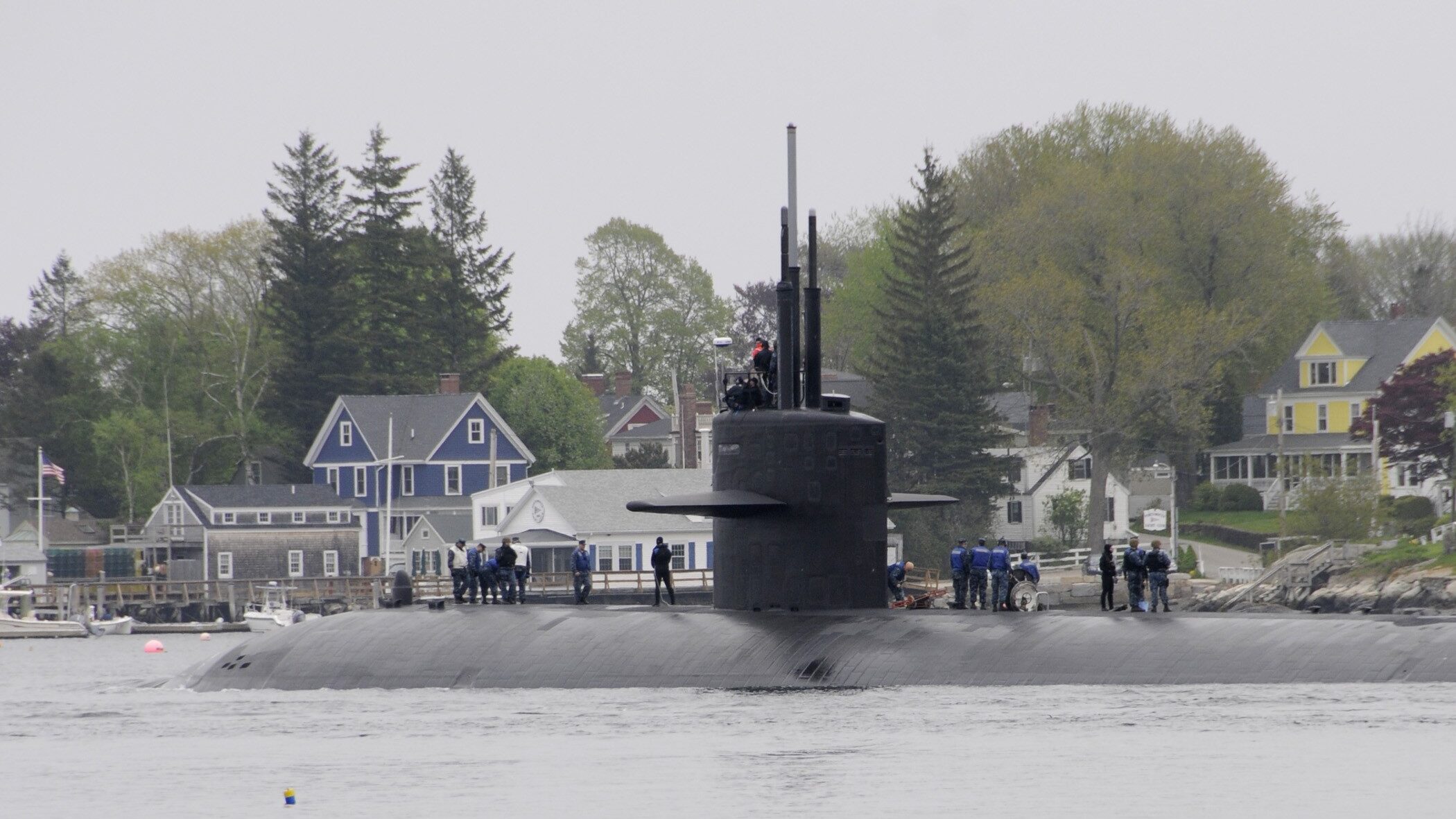
WASHINGTON — Within the next year the US Navy wants to initiate a “scoping study” aimed at determining if the service needs to establish a fifth public shipyard to support future submarine maintenance, according to a senior officer involved in the task, a notion that previously met with some resistance from lawmakers.
Rear Adm. Jonathan Rucker, program executive officer for attack submarines, told reporters here at the Naval Submarine League symposium that industry frequently asks the Navy about considerations for a new public shipyard. He also stressed that the scoping study was preliminary and there is no clear consensus in the service yet about whether another shipyard is even necessary, let alone whether it will be built.
“Right now, we’re in a stage to say: ‘Let’s go scope how capable our shipyards could be?'” he said. Once the service completes its Shipyard Infrastructure Optimization Program, “how efficient will we be?” he continued, referring to the Navy’s 20-year plan to overhaul the four existing public shipyards.
“What is our true capability and capacity?” he said. “If we make the assumption that we’re never going to get better, the answer is we don’t have enough. But we’re doing a lot of stuff” to improve the service’s infrastructure in the meantime.
A recurring theme from the admirals speaking during the symposium this year has been the need for every aspect of the Navy’s submarine community — uniformed and civilian, operational and administrative, service and industry — to take a cue from Chief of Naval Operations Adm. Michael Gilday’s book: “Get real, get better” — and do it fast.
Nowhere was that more evident than Rucker’s remarks where he clearly laid out issues facing his particular slice of the submarine community.
“If you look at where we are today… I’ll be real about this as well: Of the 50 attack submarines we have, 18 of them are either in maintenance or waiting to go in maintenance,” he said. “We should be at 10. Our goal is 20 percent.”
That was one of several statistics he gave that all pointed to a need for improvement, and alongside each statistic Rucker made the case the service was tackling the challenges head on.
He also alluded to numerous conversations industry has initiated about the prospect of building a new public shipyard to help alleviate the burden.
Breaking Defense in May published an extensive report about one Ohio businessman’s proposal to the Navy to do just that. Ed Bartlett, an engineer and former enlisted sailor, called his proposal “the only actionable plan” to relieve the Navy’s submarine maintenance backlog, and he has numerous former admirals, shipbuilding industry giants and local politicians backing his ideas. But at the time, lawmakers on Capitol Hill seemed unconvinced that now’s the time for such a major investment. Reps. Joe Courtney, Conn., a House Democrat known for being hawkish on Navy spending, called it a “tall order.”
Related: Is a new Navy shipyard realistic, or just a ‘tall order?’
Rucker today said the service had underestimated several issues that are now causing problems, such as the second- and third-tier ramifications of the coronavirus pandemic. But he added that another shipyard is a “big path to go down,” if that decision is ever made. Right now, the Navy’s urgent focus is on improving the capabilities and efficacy of the current shipyards, he added.
Making Every Sub Count
In parallel with studying the possibility of a new shipyard, the Navy is also considering service life extensions on a boat-by-boat basis for both Ohio-class ballistic missiles and Los Angeles-class attack submarines.
Rear Adm. Scott Pappano, the program executive officer for strategic submarines, said on Tuesday that up to five Ohio-class subs could end up receiving 18-month maintenance availabilities that would lead to them having three extra years of service life.
Pappano also said the decision is “not all or nothing,” and that each boat would be assessed individually, starting with the Alaska (SSBN-732). The decision for that boat would have to be made in fiscal 2026 and the maintenance availability would occur in FY29, the rear admiral added.
The purpose of those life extensions would be to make sure the service has a sufficient number of nuclear submarines operational and available for deployment in the early 2030s when the new Columbia-class submarines are expected to be delivered.
The service is also continuing to assess its Los Angeles-class attack submarines for their own possible life extensions. Rear Adm. Doug Perry, the director for undersea warfare in the CNO’s office, also called N97 within the Navy, said the service is evaluating each boat as it reaches the end of its anticipated service life.
During this event last year, Perry said he had approved the Alexandria (SSN-757) for a three-year extension. Rucker today said earlier this year the Scranton (SSN-752) was also approved for a life extension, although he declined to say for how many years.